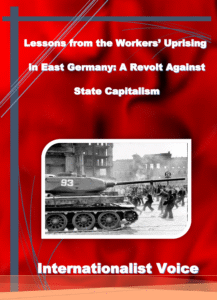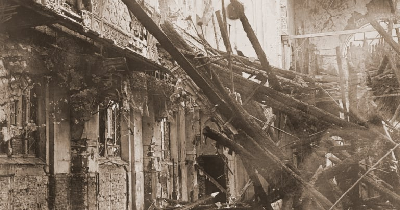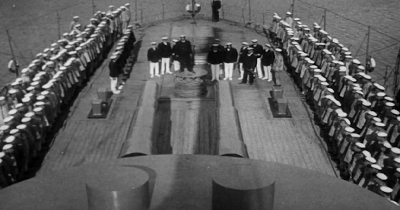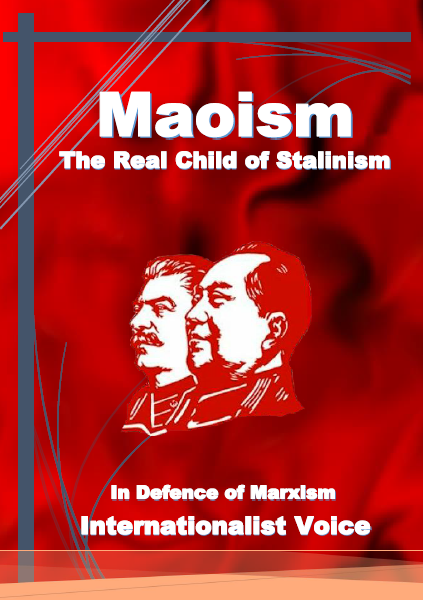Lessons from the Workers’ Uprising in East Germany: A Revolt Against State Capitalism
On 17 June 1953, workers in East Germany rose up against the ruling class. The Stalinists portrayed the uprising as a “fascist coup”, allegedly organised with the involvement of West Germany and the United States. However, an examination of the background to the revolt — its underlying conditions, the factors that made it possible, and the forces involved — clearly shows that the workers’ uprising was a response to their living conditions.
This uprising, with all its ups and downs — both in terms of its shortcomings and weaknesses (negative lessons), and the achievements and capabilities it demonstrated (positive lessons) — has left us with important experiences and insights. Examining these lessons can play a crucial role in the future struggles of the labour movement, as avoiding the repetition of past mistakes and building on positive gains can serve future class struggles and have a decisive impact.
Understanding the background and conditions that led to this uprising is essential for comprehending the protests, workers’ strikes, and ultimately the workers’ revolt in East Germany. First, we will examine these underlying conditions, then explore the uprising itself, and finally consider the lessons that can be drawn from it.
Just as bandits fall into dispute over the division of spoils after a victory, the Allied powers, upon seeing signs of triumph in an imperialist war, launched the war with the aim of seizing and dividing the spoils. On one side stood the Soviet Union, and on the other, Britain and the United States. Following the end of the Second World War, under the terms of the Potsdam Conference held in July 1945, Germany was obliged to pay war reparations to the Allied powers, including the Soviet Union. These payments were made largely in non-monetary form and consisted of four main components:
- Industrial Equipment and Machinery:
German factories, production lines, industrial tools, and machinery were completely dismantled and transported to the Allied countries — particularly the Soviet Union — to be used in their economic reconstruction.
- Railway Infrastructure:
Double-track railway lines were reduced to single-track to facilitate the extraction and export of raw materials and industrial equipment, which were delivered as part of the reparations.
- Forced Labour:
Germany was required to provide human labour in the form of forced work. Tens of thousands of Germans — both prisoners of war and civilians — were transferred to the Soviet Union, and in some cases to the United States, where they were employed in industrial and reconstruction projects for periods ranging from several months to several years.
- Export of Goods and Raw Materials:
Reparations also continued in the form of exports of goods such as coal, steel, chemicals, grain, and other materials. These played a significant role in meeting the economic needs of the Allied powers in the post-war period.
Initially the Western powers, and later the Soviet Union, came to the conclusion that the process of extracting reparations from Germany should be halted. This was because the practice not only harmed the German economy, but also indirectly had a negative impact on their own economies, bringing with it serious economic and political consequences. The extraction of reparations had been made possible, on the one hand, through the severe exploitation of the working class, and on the other, through a decline in their standard of living. As a result, the payment of such reparations by Germany in the zones controlled by the Western Allies largely ceased by around 1950. Nevertheless, the German Democratic Republic (East Germany) continued to pay reparations to the Soviet Union until 1953.
In East Germany, the Stalinists of the German “Communist” Party united with the Social Democrats — those who had previously participated in the suppression of the German Revolution, the very perpetrators of the murder of the revolution, of Rosa Luxemburg and Karl Liebknecht — to form the Socialist Unity Party of Germany (SED), which acted as the new ruling class in East Germany.
From 1952, the SED adopted a policy of accelerating the construction of socialism. This policy entailed increased investment in heavy industry and a drive to raise labour productivity, but at the cost of sharp reductions in investment in infrastructure, consumer goods production, and the provision of public services. In practice, it amounted to a direct assault on the living standards of the working class and severely undermined their economic position.
In the new system, private ownership of the principal means of production was transferred to state ownership. However, the nationalisation of property has never equated to the socialisation of the means of production — nor does it today. In this structure, the state replaced private capitalists, and bureaucrats, acting as state managers, functioned as a new exploiting class. The economy under this system remained governed by the laws of capitalism and the law of value, with its primary aim being the more effective and systematic exploitation of the working class. Workers were deprived of any control over their labour and their lives; every aspect of their existence was subjected to the discipline and command of the state and the ruling party. The new ruling class justified and exercised its dominance through the use of “socialist” rhetoric.
In the new structure, the Eastern Bloc was economically weaker than its Western rivals, led by the United States, and the gap between them grew wider by the day. The inability to compete on the global stage compelled the East German leadership to exert increasing pressure on the working class in order to extract greater productivity and profit. This situation gave rise to growing discontent within society.
To reduce social discontent and gain the support of the middle class, the East German authorities, with backing from the Soviet Union, enacted several policy changes. However, the law that compelled workers to increase productivity remained in force. This meant that, due to the gap between rising productivity and the minimal increase in wages — particularly in the construction industry — the standard of living for workers remained unchanged and failed to improve.
On 16 June, a group of construction workers in East Berlin staged a protest after learning that the law requiring increased productivity would remain in place. When a trade union activist confirmed this, the workers’ anger flared. On 17 June, the protests and workers’ strikes in East Berlin escalated into a general strike, paralysing the city. These protests quickly spread to other parts of East Germany, particularly the country’s central industrial region. The struggles were led by strike committees formed within public assemblies.
The course of events and the speed at which they unfolded suggest that experienced workers were likely present among the workers—those with a history of previous protests and upheavals. Examining the workers’ demands, we encounter explicitly class-based calls, such as “Piecework is murder”, demands for an improved standard of living, lower prices, higher wages, and similar concerns. While singing songs like “Brothers, to the Sun, to Freedom” (Brüder zur Sonne, zur Freiheit)[1] and “The Internationale,” the workers marched towards the factories during the demonstrations, rallying other workers to join them:
“At the Sachsenwerk factory in Dresden a group of workers marched to nearby factories, singing the Internationale and bringing out their employees along the way.”[2]
On the other hand, the red flags were lowered and replaced by the German flag, reflecting nationalist tendencies within the workers’ uprising. This tendency was more pronounced in rural areas than in urban centres. Instead of moving towards the power of workers’ councils, the workers were under the illusion of liberal democracy and demanded free elections.
In the June 1953 uprising, the anger of East German workers was directed at the ruling party and Soviet leaders; they tore down and destroyed images of Stalin and Lenin. However, during the revolt, images of Marx were left untouched. In other words, they drew a clear distinction between Marx’s ideals and the actions of the ruling party and Soviet leaders:
“Workers’ protests followed throughout the country however. The headquarters of the Youth Movement and the prison were occupied in Leipzig. Portraits on the walls were torn down, but those of Karl Marx were pointedly spared.”[3]
As a result, these events show that the protesters deliberately targeted images of the ruling party and Soviet leaders, while symbolically showing respect for Karl Marx. They likely regarded the totalitarian policies of the party and Soviet government as Bolshevism. However, due to the historical defeat of the working class and the dominance of the counter-revolution, they were unable to grasp the reality that Stalinism was not a continuation of Bolshevism, but its deadly enemy. Stalinism, by massacring a generation of Bolsheviks—the architects of the glorious October Revolution—was able to celebrate its victory upon the bones of communists bathed in blood. Even then, continuing the same historic repression, it was suppressing protesting German workers.
The East German police were unable to suppress the workers’ uprising, and ultimately the Soviet army[4] intervened. A bloody crackdown followed: dozens were killed and thousands arrested, and the uprising was drowned in the blood of East Germany’s proletariat. However, the defeat of this revolt was not solely the result of military suppression by the Soviet army; part of it also stemmed from internal weaknesses within the protest movement itself. Some of these will be examined below.
Isolation of the protests:
Although the June 1953 protests began in Berlin and quickly spread throughout East Germany, they did not extend beyond the country’s borders. They failed to spread to West Germany, other Eastern Bloc countries, or Western nations. This lack of expansion and isolation left the workers’ uprising unsupported against the Stalinist repressive apparatus, paving the way for direct intervention by the Soviet army and a bloody crackdown. The failure of the protests to spread to other countries was one of the key factors in their defeat.
The Weight of Counter-Revolution:
The workers’ uprising occurred at a time when the global working class, still reeling from its historic defeat, had not yet regained the strength and power necessary to rebuild and defend its class position. Although this defeat had worldwide implications, it was accompanied by greater intensity and brutality in the Soviet Union and Germany, and accordingly, the domination of the counter-revolution was more devastating. Stalinism prevailed in the Soviet Union and East Germany, while in West Germany, the destructive dominance of capitalist democracy was firmly established.
The Illusion of Democracy:
The dominance of the counter-revolution had created the illusion among workers that liberation from class exploitation could be achieved through democracy and free elections. For this reason, one of their main demands was the holding of free elections. The workers were deluded about the West German trade unions and sought their support by appealing to them for assistance. However, Ernst Scharnowski, the head of the German Trade Union Confederation (Deutscher Gewerkschaftsbund), refused to call for a solidarity strike, citing a desire to avoid adventurism. He gave a harsh response to the workers, implying that in class struggles one must choose between labour and capital, and that the union leader represented capital in the workplace. The workers had forgotten that these very unions had mobilised them to be slaughtered in the First World War and now acted as instruments of capital in the workplace.
Lack of a Revolutionary Organisation:
The dominance of counter-revolution, resulting from the historic defeat of the working class and the absence of a revolutionary organisation—one that could act as a compass by offering a clear vision and providing direction to the protests—meant that the workers’ uprising was unable to outline a long-term political horizon for itself. This absence of a revolutionary organisation was one of the key factors behind the failure of those protests. A similar phenomenon later appeared in a different form during the events in Poland.
Workers began their struggle spontaneously, but for it to continue and, especially, to be elevated to a higher level, the proletariat needs to consciously organise its fight and lead it along an anti-capitalist path. This requires the existence of a revolutionary organisation, and in revolutionary conditions, a global party is essential. It is this revolutionary organisation that raises the proletariat’s awareness of the dangers ahead. A prime example is the events of July 1917, when the Bolsheviks, with maturity and insight, prevented the bourgeois provocation from leading to the massacre of the working class.
The Illusion About the Repressive Apparatus:
The workers succeeded in neutralising the East German police, which was suffering from significant weaknesses. Capitalism, in its period of decline, has become a global structure. Had the goal not merely been the overthrow or replacement of the ruling powers, but the destruction of the system itself, its realisation would have required the expansion of workers’ protests to West Germany and beyond.
In such circumstances, West German workers would inevitably have come face to face with that country’s repressive forces. In other words, even if the Soviet army had refrained from suppressing the workers’ uprising, the West German security apparatus would have intervened first — and if it had failed, other Western powers stationed in West Germany would have stepped in to quell the movement.
A successful workers’ uprising, in addition to the presence of a revolutionary organisation (that is, a revolutionary party in revolutionary conditions), requires workers’ councils that not only play a political role but also possess military structures. Only under such conditions can they organise armed resistance and take effective steps towards the overthrow of the bourgeois state. Confronting thousands of armed soldiers and hundreds of tanks with sticks and Molotov cocktails is simply not feasible.
When workers’ councils are formed and move towards the seizure of political power, they are inevitably compelled to establish their own military structures. A clear example of this was seen during the Russian Revolution of 1917, when the Military Revolutionary Committee of the workers’ and soldiers’ councils issued the order to seize power — with Leon Trotsky at its head.
It must be emphasised, however, that the conditions of the working class in 1953 cannot be directly compared to the revolutionary circumstances of 1917 to 1923; nevertheless, those experiences still offer valuable lessons for the workers’ movement of the future.
Following the suppression of the June workers’ uprising, the Western bourgeoisie sought to channel such protests into the bourgeois arena, framing them as struggles for democracy and freedom. This strategy aimed both to gain influence within the former Eastern Bloc and, by stripping these protests of their class content, to prevent the spread of workers’ struggles into the former Western Bloc.
In this regard, the West German bourgeoisie resorted to a clever tactic by declaring 17 June 1953 as a “national day” in West Germany, commemorating the so-called “people’s uprising” that had been suppressed by Soviet forces. From 1954 until 1990, 17 June was observed as an official public holiday and celebrated as “German Unity Day” in West Germany.
The June 1953 uprising, despite all its heroism, demonstrated that the illusion of democracy is a deadly poison that has always been used against the workers’ class struggle. This illusion was presented as a horizon in the former Eastern Bloc and remains prevalent in peripheral capitalist countries, while in bourgeois democracies it continues to be employed as a tool against class struggle. In bourgeois democracies, the working class is warned to defend democratic institutions; otherwise, dictatorship will take hold under the guise of democratic systems. The working class can only advance its struggle by standing firmly on its class position and organising through factory committees, strike committees, general assemblies, and similar structures.
The key to the success of any protest or strike is its expansion. Capitalism, in its era of decline, is a global system, and the class struggle for genuine achievements must break free from isolation and spread to other countries as well. When the struggle intensifies and an uprising or revolt emerges, strike committees and general assemblies alone are no longer sufficient; it becomes necessary to move towards the formation of workers’ councils.
Advancing the class struggle to a higher level requires the existence of a revolutionary organisation. The bourgeoisie, through anti-communist campaigns, equates Stalinism with communism and presents the crimes of Stalinism as those of communism. This strategy aims to discredit and suppress any revolutionary movement, poisoning the “sleeping giant” of the proletariat. The bourgeoisie has intensified its dirty campaign of anti-communism, a trend that has become particularly pronounced in recent years in Germany. This situation places a heavy responsibility on the communist left to defend Marxism, so they can combat the bourgeoisie’s ideological attacks and offer an internationalist horizon for class liberation.
A&J
10 June 2025
Notes:
[1] One of the workers’ songs is socialist in nature. This song was originally inspired by a Russian revolutionary anthem called “With Courage, Comrades, Step by Step!” It was first sung by political prisoners during their march to Siberian exile in 1898. The song quickly became well known for its rousing nature, as well as for the origin of its melody. During the 1905 Russian Revolution and the October Revolution of 1917, it became an anthem in Russia.
In 1918, Hermann Scherchen adapted the song into German. The anthem calls upon workers and labourers to unite, to fight for freedom, and to build a new world. Its tone is highly stirring and epic, presenting a vivid vision of hope for liberation from oppression and the creation of a new world. Phrases such as:
- ‘Brothers, to the sun, to freedom’
- ‘Forward to a bright future’
- ‘Towards a new world, without slavery and oppression’
are among its central themes.
[4] It is important to clarify that the Red Army formed in later periods, as a counter-revolutionary and bourgeois force, bears no relation whatsoever to the Red Army of the Russian Civil War — that proletarian military force which stood firm against numerous imperialist armies. The Red Army that arose during the Civil War sprang from the working masses and embodied the will of the proletariat, full of courage, sacrifice, devotion, and a deep faith in the revolutionary ideals of the proletariat. However, the subsequent Red Army, which appeared on the ruins of the October Revolution as a bourgeois army, carried only a false name, with no connection to that passionate, conscious force loyal to proletarian principles.















